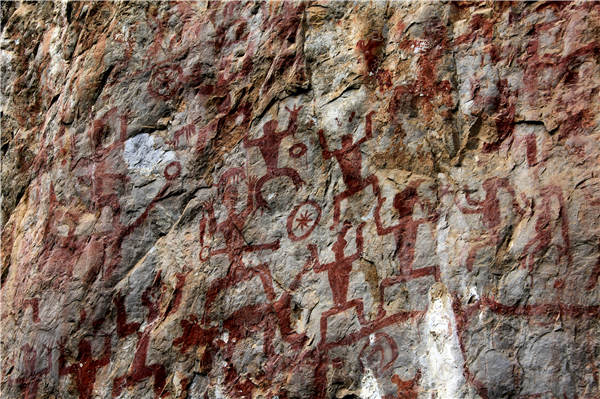 |
|
Zuojiang Huashan rock painting in Guangxi, July 15, 2016. [Photo provided to China Daily] |
Getting recognized
Explaining the rationale behind seeking world heritage status for the site, Lan Riyong, the deputy director of the expert panel with the Guangxi office that sought the status, says: "When we sought UNESCO status, the rock art per se was not the only focus.
"The landscape, including the paintings, the cliffs, the river, and people's way of life on the terraces across the river, is seen as one entity: The cliffs are panels, and the river is like a string which connects these pearls. People hold their sacrifices and ceremonies on the terraces to show their reverence for the site."
A project to conserve the rocks in the Zuojiang area, which started in 2003, is ongoing.
The project is demanding when it comes to technique. The workers are not allowed to touch the paintings even when the scaffolding is being set up. Also, cage fishing, which was common in the area, is no longer allowed to avoid affecting the Zuojiang River within the heritage zone.
Gu Hang, the director of Guangxi Cultural Heritage Bureau, says despite the process to gain world heritage status for the area being fraught with difficulties, there was plenty of local support.
"When we stopped cage fishing or relocated their residences to provide a better view of the cliffs, they showed more understanding than we had expected.
"One fisherman told me, 'The rock art is what our ancestors left for us. ... We can move to somewhere else or switch to other professions'."